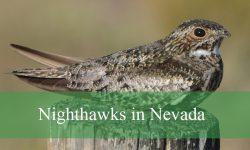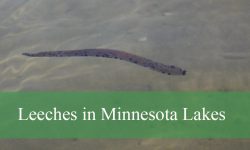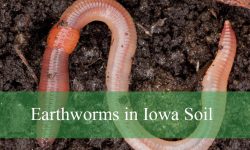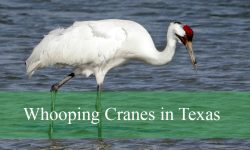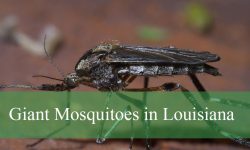Puffins are among the most charming seabirds in the world. With their bright beaks, expressive faces, and energetic flights across rocky shorelines, they have become icons of northern oceans. Maine is one of the only places in the United States where these birds still nest, making the coastline an important refuge for a species that once nearly disappeared.
Visitors often imagine puffins as friendly cartoonish birds that spend their days resting on cliffs. Yet their real lives are far more surprising. Beneath the surface of Maine’s cold Atlantic waters and inside the dark burrows of offshore islands, puffins live complex, demanding, and sometimes mysterious lives.
This article uncovers the scientific truths, little known behaviors, and unexpected challenges puffins face in Maine. Their story reveals both their resilience and the delicate environmental balance required for them to survive.
Understanding Puffins in Maine
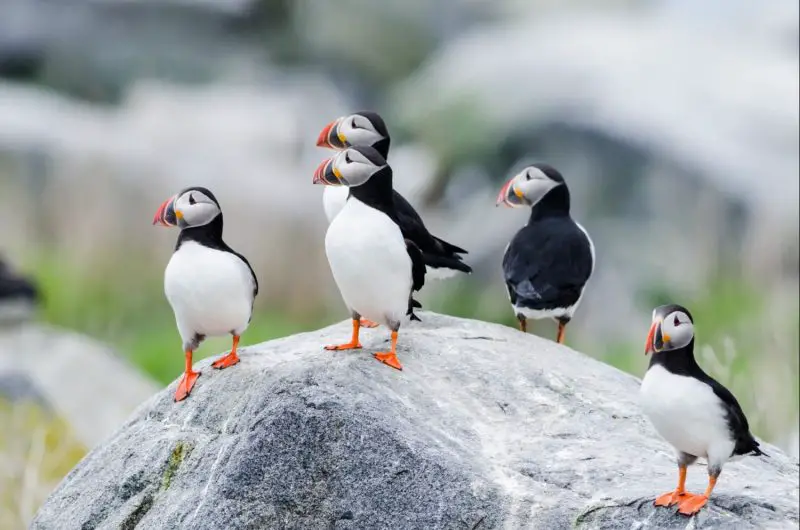
What Puffins Really Are
The puffins found in Maine are Atlantic puffins, scientifically known as Fratercula arctica. They belong to the auk family and are expert divers and wing propelled swimmers. Their colorful beaks glow most brightly during breeding season. Outside of summer, the beak becomes darker and smaller as a keratin layer sheds off.
Their appearance gives them a playful aura. However, puffins are highly specialized seabirds built for an ocean centric lifestyle. Their wings are short and strong for underwater propulsion. Their bodies are compact for navigating rough seas.
Where They Live in Maine
Maine is home to a handful of critical puffin nesting islands. The most famous are Eastern Egg Rock, Matinicus Rock, Seal Island, and Petit Manan. These places are remote, rocky, and isolated. The harsh environment protects puffins from land predators and human disturbance.
Most people never see puffins away from their islands. During the rest of the year, puffins live entirely at sea. They float, dive, and feed in the open Atlantic far beyond the coast.
A Bird With a Global Range
Atlantic puffins nest across the North Atlantic. Colonies exist in Iceland, Norway, Ireland, the Faroe Islands, and northern Scotland. Maine’s colonies represent the southernmost breeding groups in the western Atlantic. Because of this position, Maine’s puffins face unique climate and oceanic changes not experienced by northern populations.
How Puffins Disappeared and Returned to Maine
Historic Decline
During the nineteenth and early twentieth centuries, puffins in Maine were nearly wiped out. Hunting for feathers, meat, and eggs devastated colonies. Human activities on islands further disrupted nesting grounds.
By the early 1900s only a few dozen puffins remained in the state. Matinicus Rock held the last small remnant population. Many believed puffins would disappear from the region forever.
The Restoration Success Story
In the 1970s researchers launched a bold conservation effort later known as Project Puffin. Young puffins were transported from Newfoundland to Maine to reestablish lost colonies. The project also used decoys and recorded calls to attract returning adults.
Decade by decade puffins began returning. Today several hundred pairs nest in Maine thanks to this restoration. Although still vulnerable, the species represents one of the most successful seabird recoveries in the United States.
Why Maine Became a Safe Haven Again
Strict protection of nesting islands, removal of predators, controlled access, and volunteer surveillance made a tremendous difference. Puffins now depend heavily on the ongoing management of these islands. Without these protective efforts, populations would decline again.
The Secret Life of Puffins During the Year
Puffins Spend Most of Their Life at Sea
After leaving the nesting islands in late summer, puffins scatter into the North Atlantic. They remain at sea for eight to nine months. They do not return to land until they are ready to breed.
The ocean provides everything they need. Puffins sleep on waves, feed in deep water, and travel enormous distances. Much of this pelagic lifestyle remains hidden to scientists because tracking puffins in the open ocean is extremely difficult.
A Life of Deep Diving
Puffins dive with exceptional speed and agility. Their wings act like underwater paddles. They pursue fish in bursts of motion. Their eyes adjust quickly from air to water, giving them remarkable underwater accuracy.
They can dive more than two hundred feet deep and remain underwater for nearly a minute. Their primary prey includes sandlance, herring, hake, and small crustaceans.
Winter Conditions at Sea
Winter at sea is harsh. Puffins must endure storms, frigid waters, and long nights. Their thick plumage and high fat diet help them survive. Unlike many seabirds that gather in large rafts, puffins often disperse widely. Their solitary winter lifestyle remains one of the least understood aspects of their biology.
Puffin Behavior During Breeding Season
Returning to the Same Burrows
Puffins are loyal to their nesting sites. Adults return to the same islands and often to the same burrows each year. They dig burrows in soft soil or nest in natural rock crevices.
This return cycle reinforces pair bonds and strengthens colony structure.
Monogamous Pairs
Puffins typically form long term pair bonds. They reinforce their partnership through gentle bill tapping behavior known as billing. These interactions help maintain their connection after months of separation at sea.
Incubation and Chick Rearing
Puffin parents take turns incubating a single egg. The incubation period lasts about six weeks. After hatching, both parents feed the chick by carrying small fish crosswise in their beaks.
The chick remains in the burrow for several weeks. It receives multiple fish deliveries per day. The quality and quantity of these fish directly influence the chick’s survival.
The Secrets of Puffin Feeding in Maine
The Importance of Sandlance
Puffins rely heavily on small forage fish. Sandlance, in particular, provide high calorie meals essential for chick growth. When sandlance populations decline, puffins struggle to raise healthy chicks.
Shifts in ocean temperature and currents alter the availability of sandlance. These fluctuations greatly influence puffin success in Maine.
How Puffins Carry So Many Fish at Once
One of the most iconic puffin images shows a bird carrying a row of fish neatly aligned in its beak. A specialized hinge in their bill and a rough tongue surface allow them to hold several fish while catching additional ones.
This adaptation makes them efficient hunters during chick feeding.
Feeding Trips and Distances
Puffins may travel several miles offshore during feeding missions. When food is scarce they must travel even farther. Longer trips reduce the number of meals the chick receives, impacting growth.
The ability of puffins to adapt their feeding distances is critical to their survival in Maine.
The Hidden Challenges Puffins Face in Maine
Warming Oceans
Ocean warming shifts fish populations. Species like sandlance and herring may move farther north. Puffins that rely on these fish must adjust or risk starvation.
Because Maine lies at the southern edge of puffin range, warming waters create challenges that northern colonies may not experience as quickly.
Storm Intensity and Nest Flooding
Powerful storms produce heavy waves and rainfall. Burrows can flood, drowning chicks or washing away nest materials. Cliff and shoreline erosion also threatens nesting habitat.
Predator Pressure
Although puffin islands are protected, gulls still pose a threat. Large gull species prey on eggs, chicks, and sometimes adults. Effective conservation includes efforts to manage gull populations.
Puffin Personalities and Social Behavior
Communicating With Calls and Body Language
Puffins produce low grumbling sounds in their burrows and sharp calls during courtship. They also communicate through wing positioning, head movements, and posture.
Their social interactions are subtle but highly structured within breeding colonies.
Puffin Sky Parades
Puffins sometimes gather in the air above colonies to perform synchronized flight patterns. These sky parades may help reinforce pair bonds and social cohesion.
Neighbor Interactions
Burrows are often close together. Puffins show territorial behaviors around their burrow entrance but maintain tolerance during colony gatherings. These interactions require precise balance to avoid conflict.
Human Observation in Maine
Best Places to See Puffins
The most accessible place to view puffins in the United States is Eastern Egg Rock. Boat tours operate from various coastal towns and offer close yet respectful viewing opportunities.
Other islands require special permits or are closed to the public due to conservation regulations.
Puffin Tourism and Conservation
Tourism supports local economies and increases awareness. Educational programs help visitors understand puffin biology and the importance of protecting their habitats.
Rules ensure minimal disturbance. Boats keep distance and noise levels low to protect the birds.
Puffins and Birdwatching Culture
Puffins have become ambassadors for coastal conservation. Birdwatchers travel from across the country to see them. Their appeal helps generate support for ongoing habitat protection efforts.
Puffin Adaptations You Never Heard Of
Specialized Beak Coloration
The bright coloration of puffin beaks is seasonal. It becomes vibrant during mating season due to changes in keratin structure. Outside of breeding season the colors fade.
This transformation helps attract mates and may signal health status.
Salt Excretion
Puffins drink seawater. They have specialized glands that remove excess salt from their bloodstream. This adaptation allows them to survive entirely at sea for months.
Wing Strength
Their wings are short compared to their body size. Short wings require rapid flapping but create powerful propulsion underwater. Puffins can reach impressive underwater speeds while chasing fish.
The Future of Puffins in Maine
Rising Sea Levels
If sea levels rise significantly, many puffin nesting islands could shrink. Burrows near the shoreline might become submerged or lost to erosion.
Fisheries Management
Sustainable fishing practices help maintain forage fish populations. Effective management ensures that sandlance, herring, and other prey remain abundant.
Conservation Progress
Despite challenges, puffins in Maine have shown remarkable resilience. Their recovery demonstrates the impact of dedicated conservation. Ongoing efforts will determine their future in a rapidly changing climate.
FAQs About Puffins in Maine
Are puffins native to Maine
Yes. Puffins historically nested along the Maine coast before population declines reduced their numbers.
When is the best time to see puffins
June and July offer the highest chance of seeing puffins during breeding season.
Do puffins stay in Maine year round
No. They remain in Maine only during breeding season and spend the rest of the year at sea.
Are puffins endangered
They are not globally endangered but local populations in Maine rely heavily on conservation.
How do puffins feed their chicks
Parents bring small fish held crosswise in their beaks and deliver them directly to the burrow.
Where do puffins go in winter
They spend winter in the open Atlantic far from land.
What threats do puffins face
Climate change, warming oceans, storms, and food scarcity are major challenges.
How many puffins live in Maine
Several hundred breeding pairs live across a handful of protected islands.
Are puffins friendly
They are not aggressive but avoid humans. They are wild seabirds that require distance.
Do puffins fly well
Yes. Despite their short wings they fly with rapid wingbeats and strong control.
Conclusion
Puffins in Maine live remarkable lives that reveal much more than their charming appearance suggests. Their survival depends on delicate marine ecosystems, specialized behaviors, and long distance migrations across harsh environments. Their story is one of near loss and extraordinary recovery, shaped by the dedication of conservationists and the resilience of the birds themselves.
By understanding the truth about puffins, we gain insight into the health of Maine’s coastal waters and the importance of protecting these fragile habitats. As climate and ocean conditions change, the future of puffins will depend on continued conservation and awareness. The more we learn, the more we appreciate the hidden complexities that allow puffins to survive where land and sea meet.

